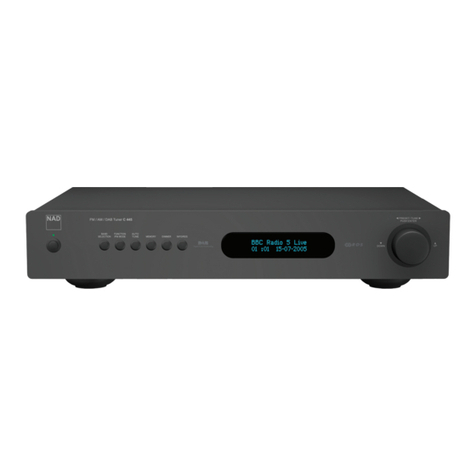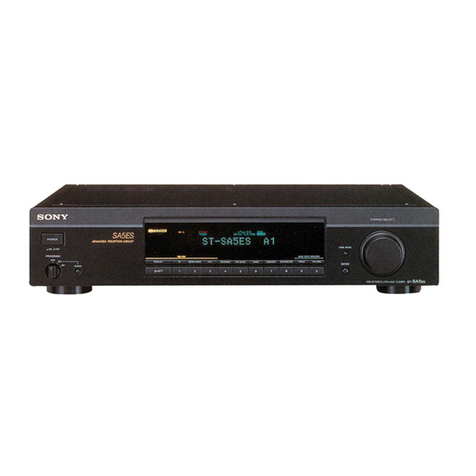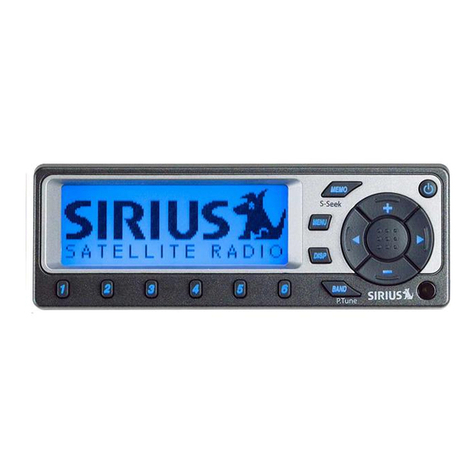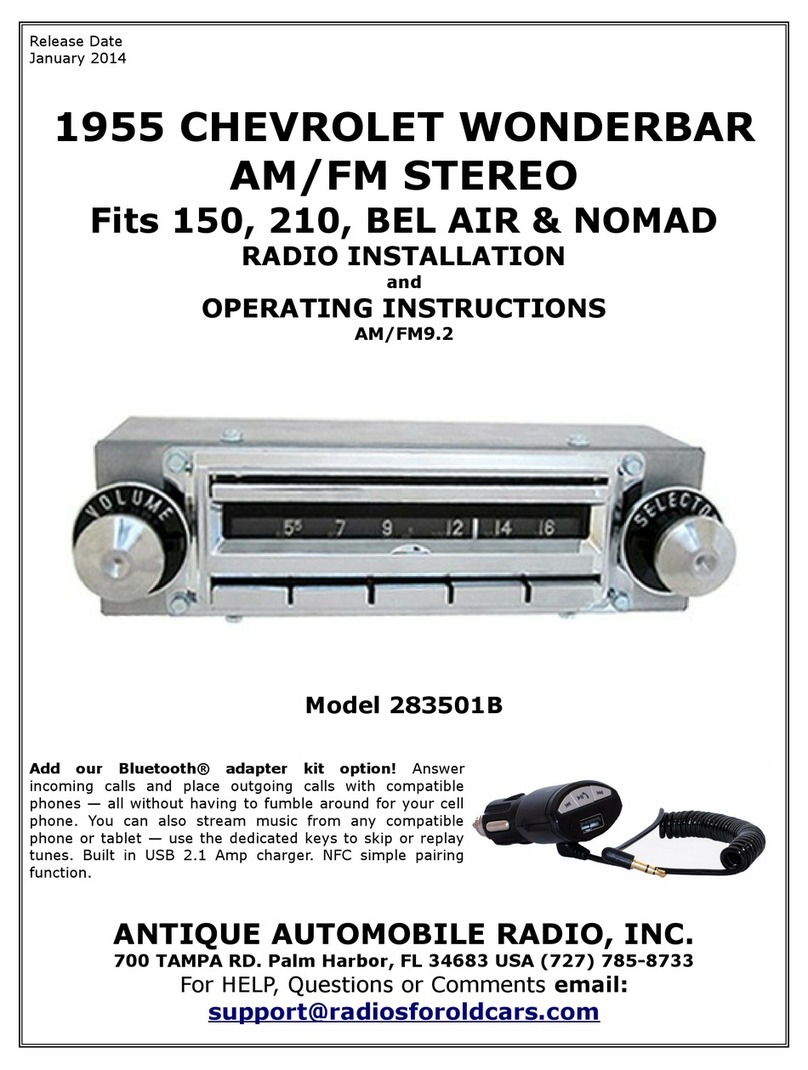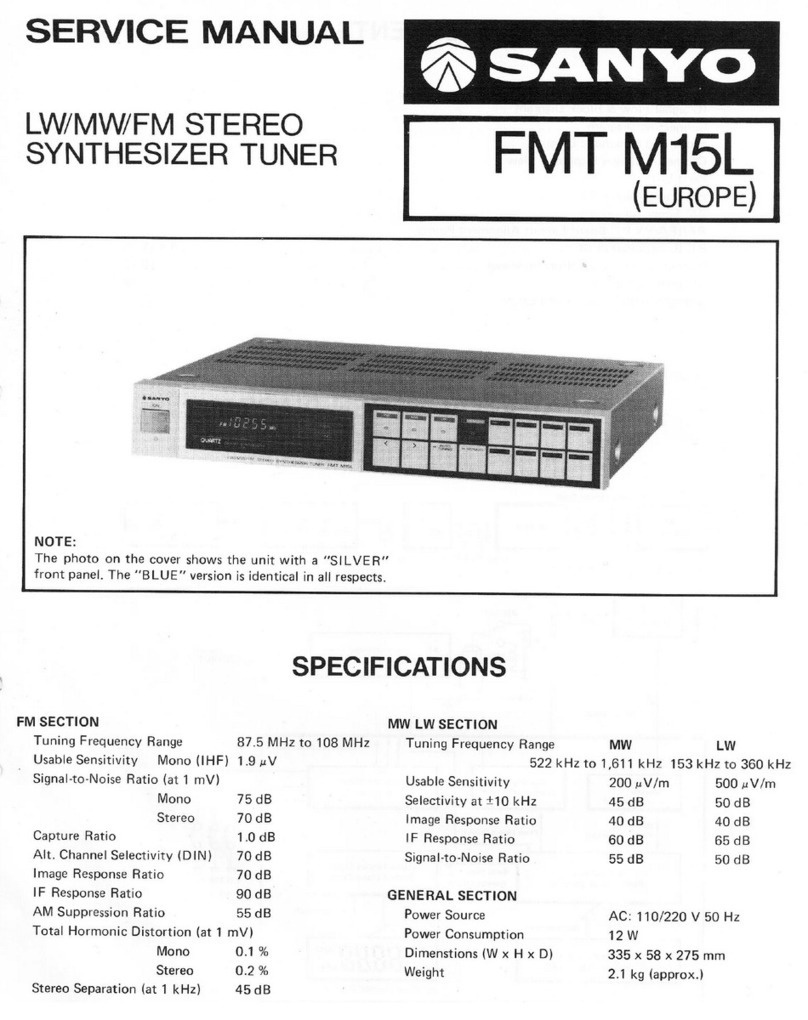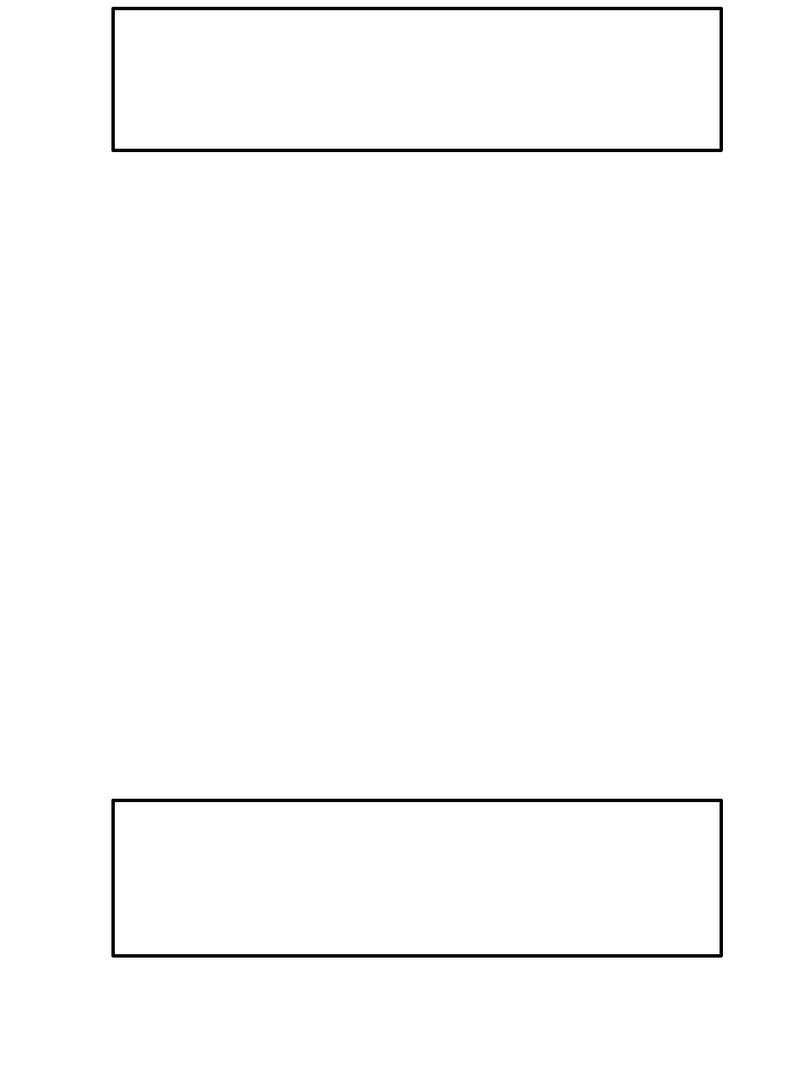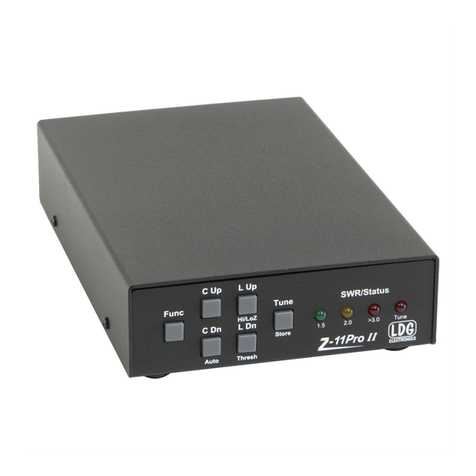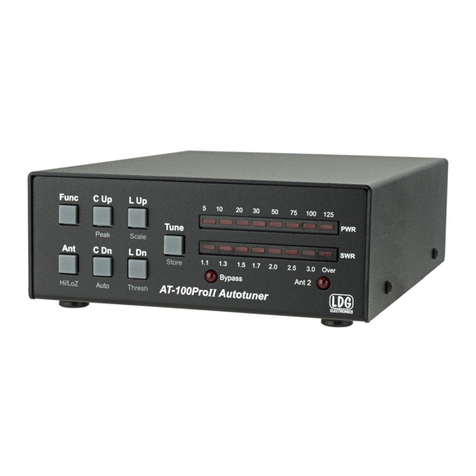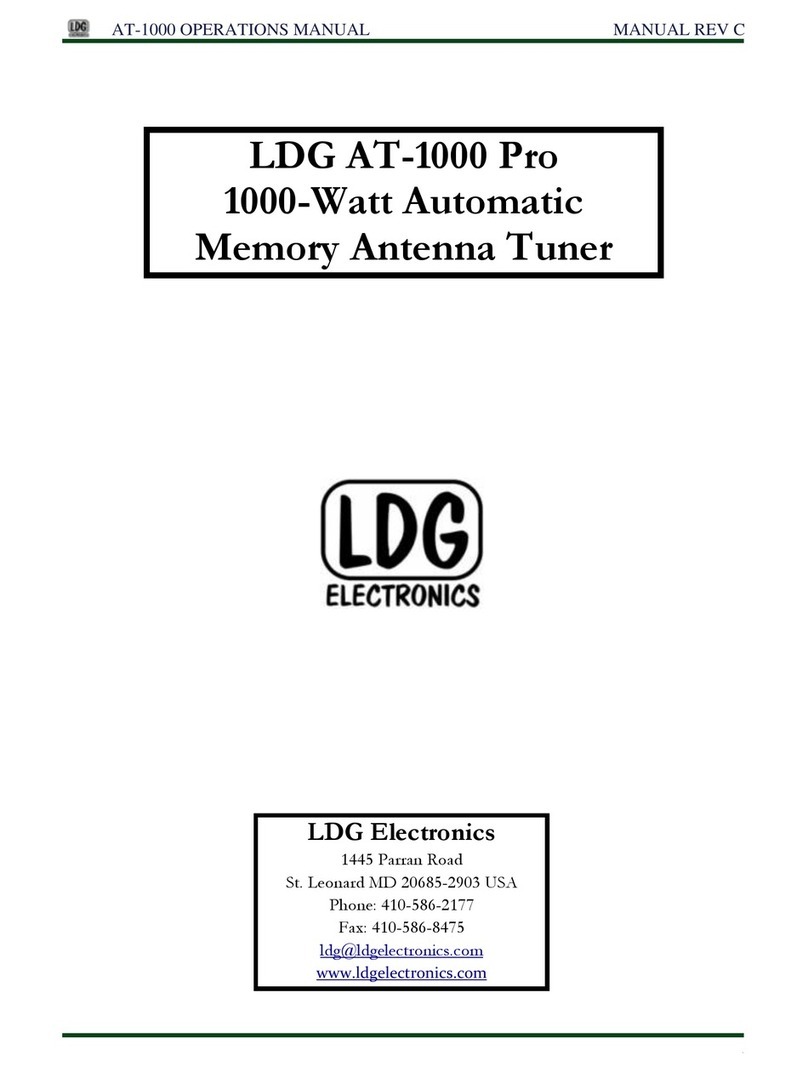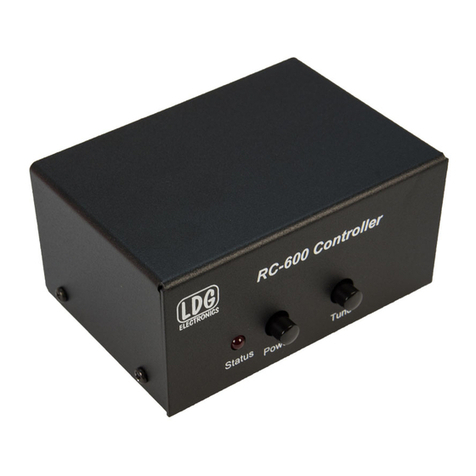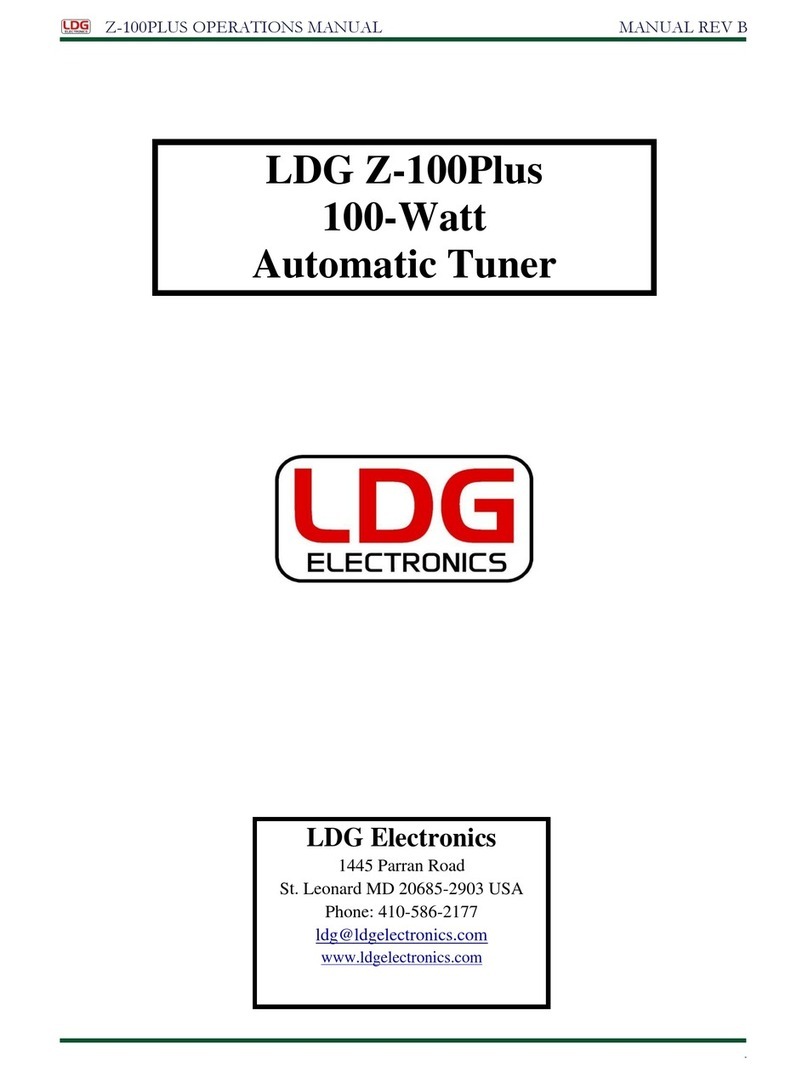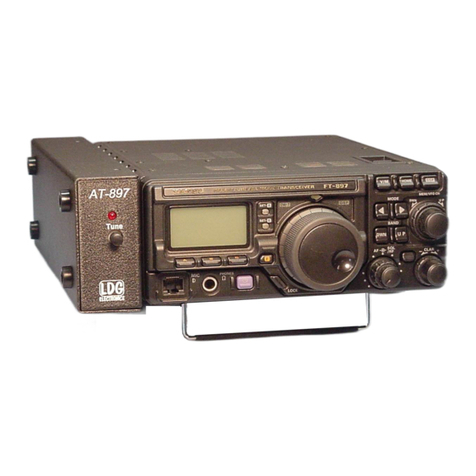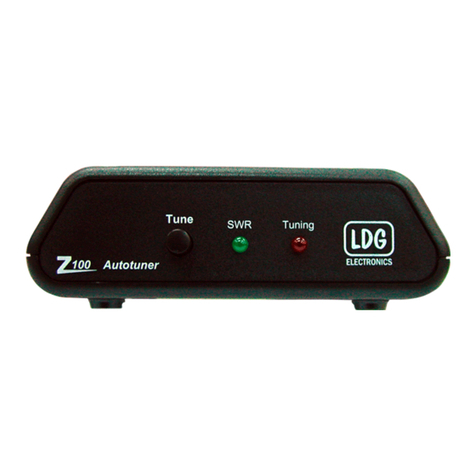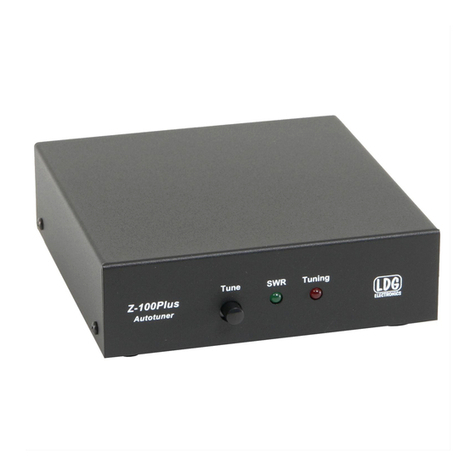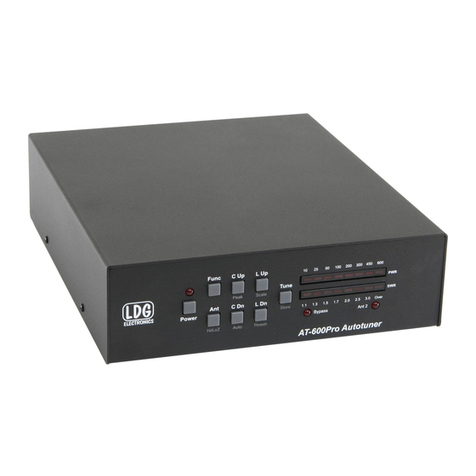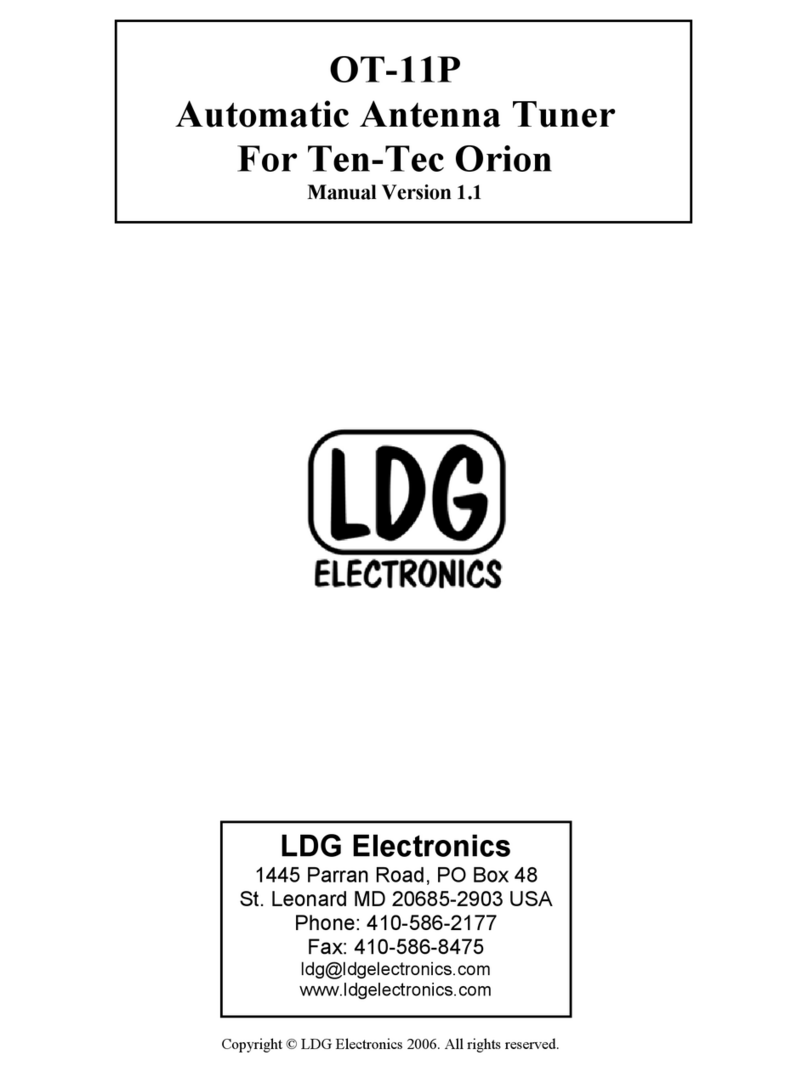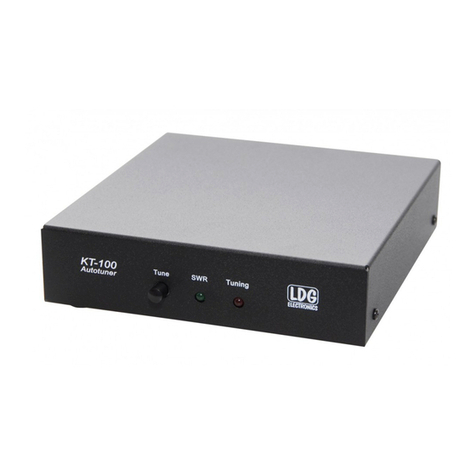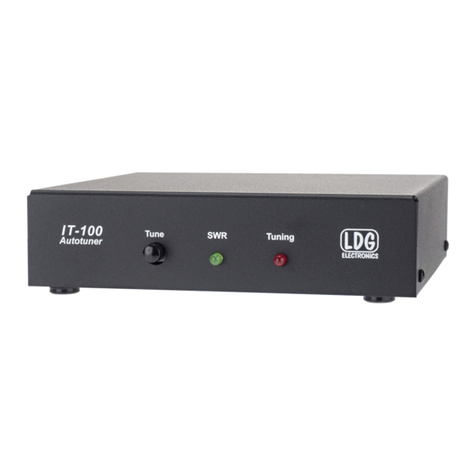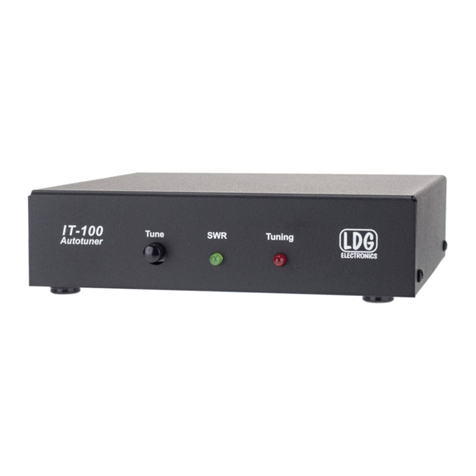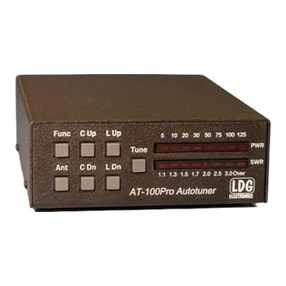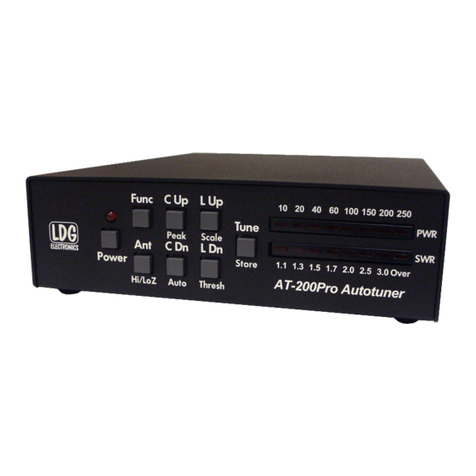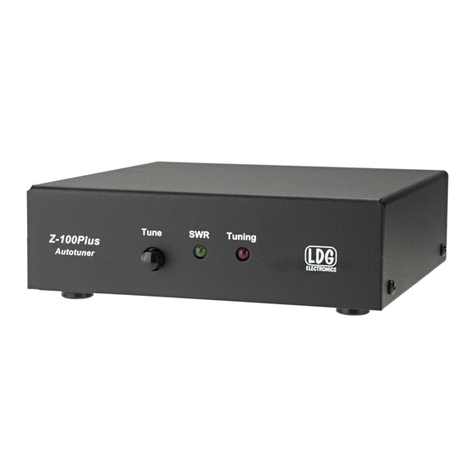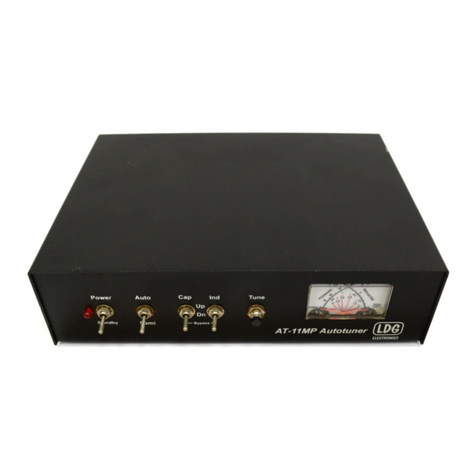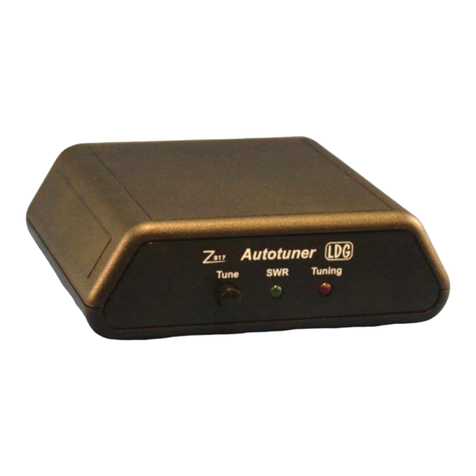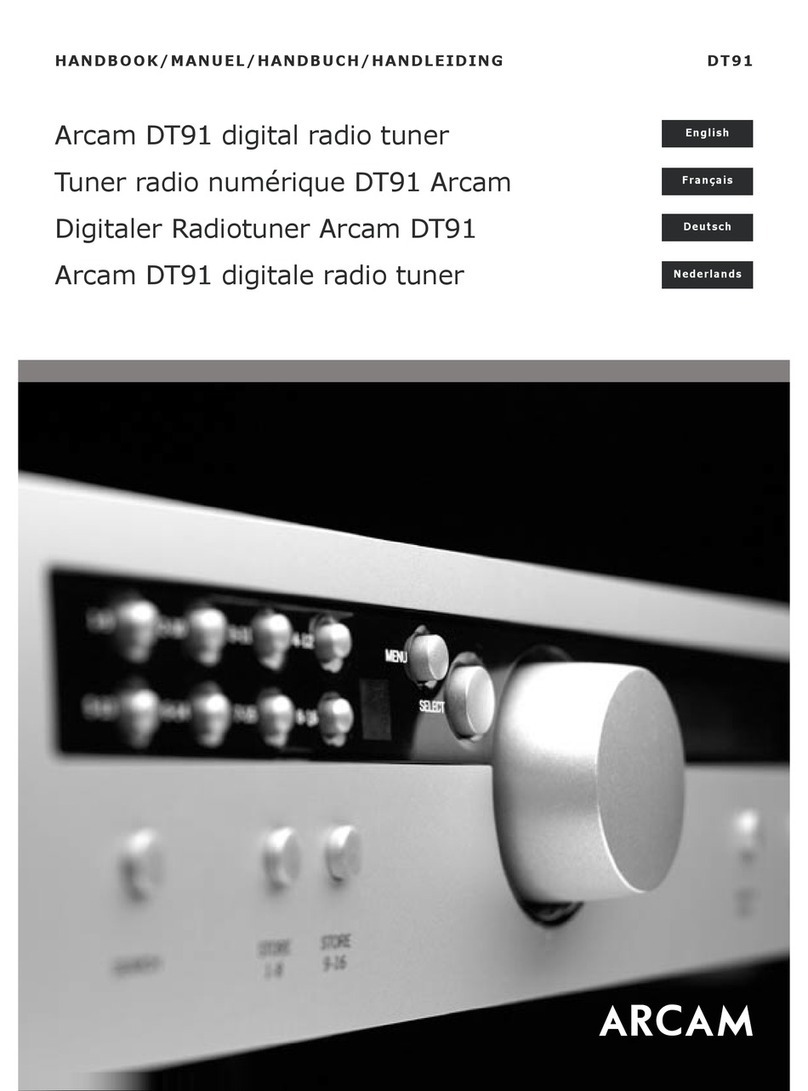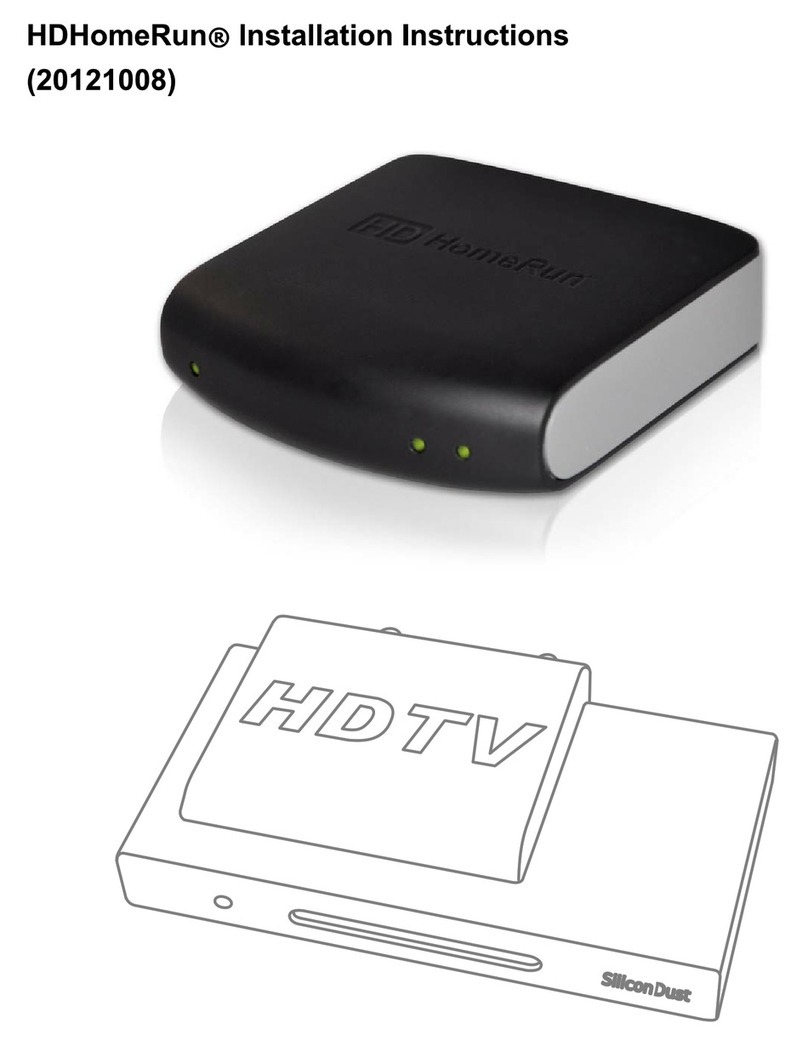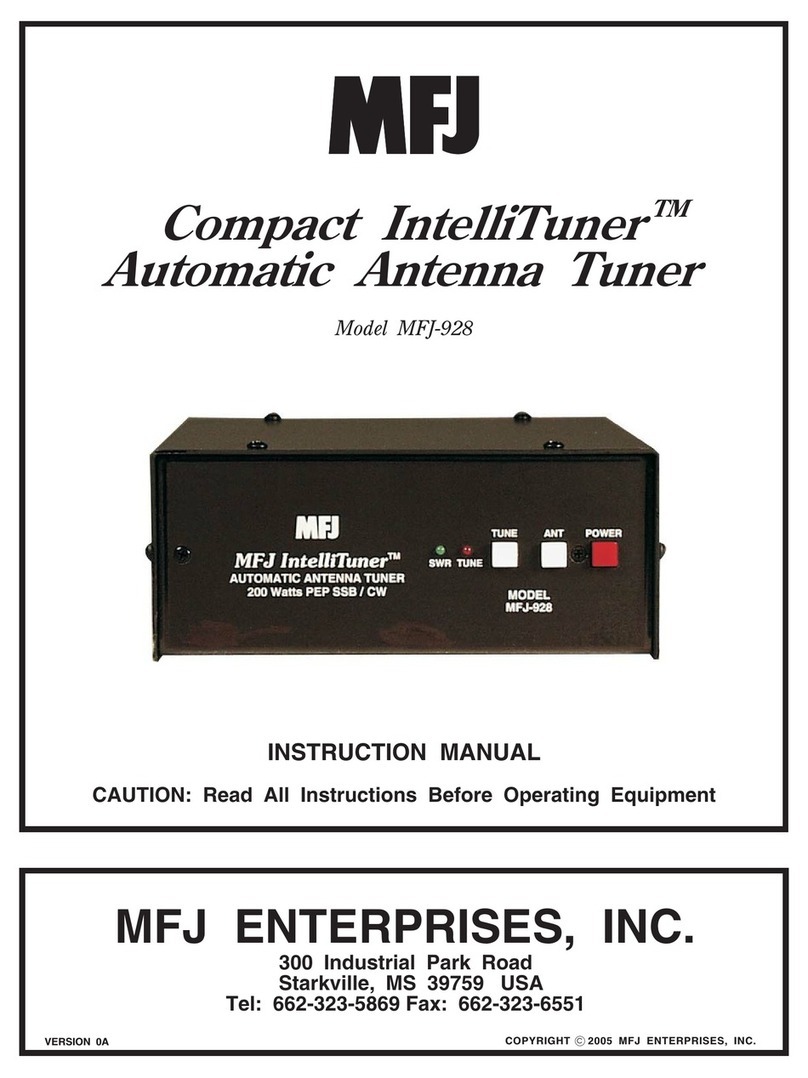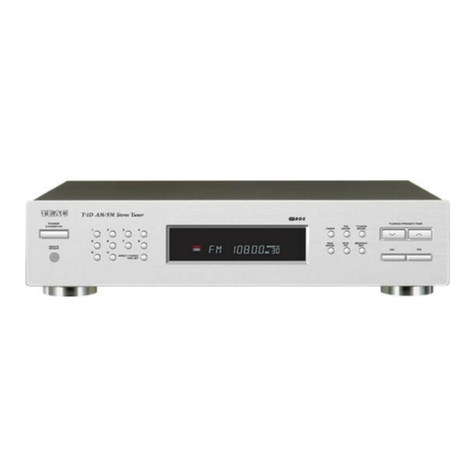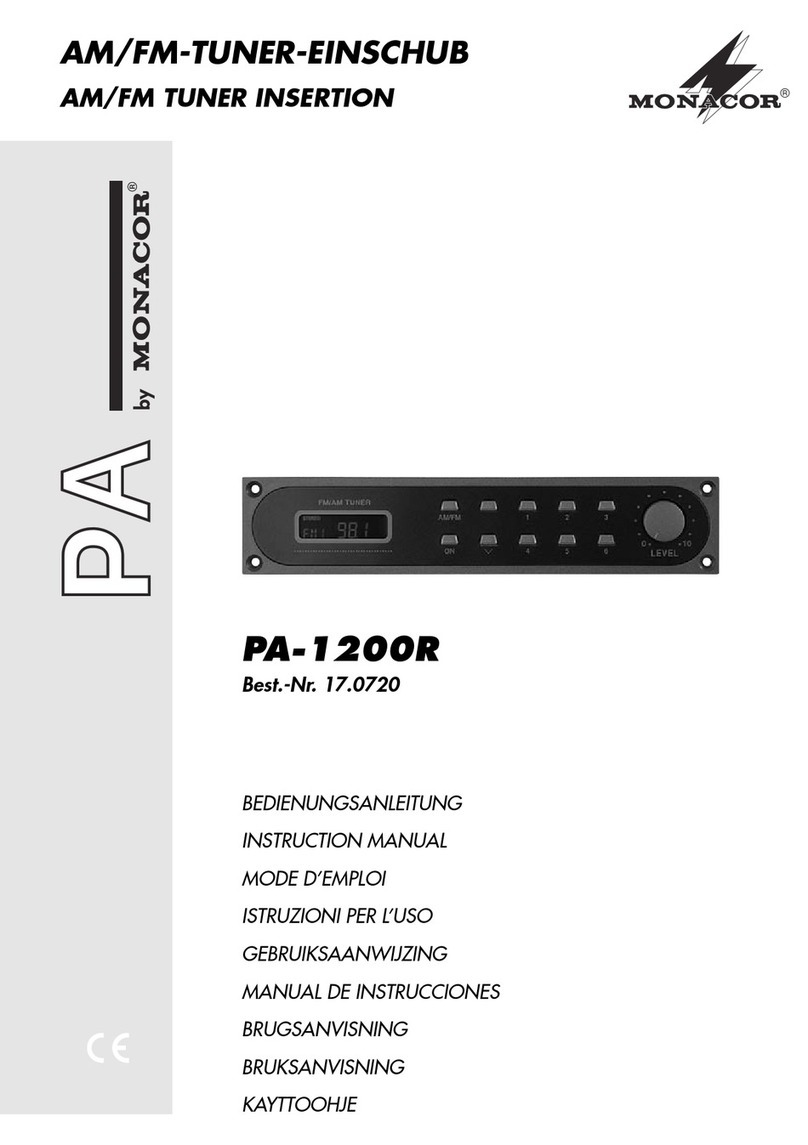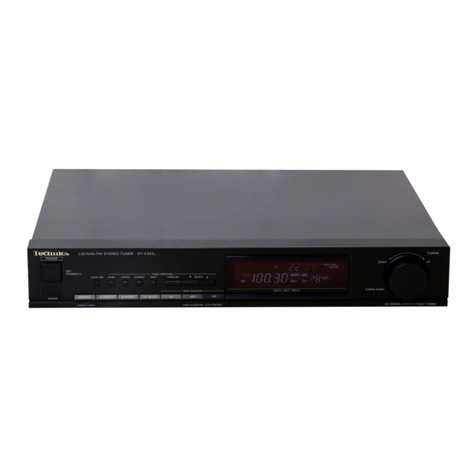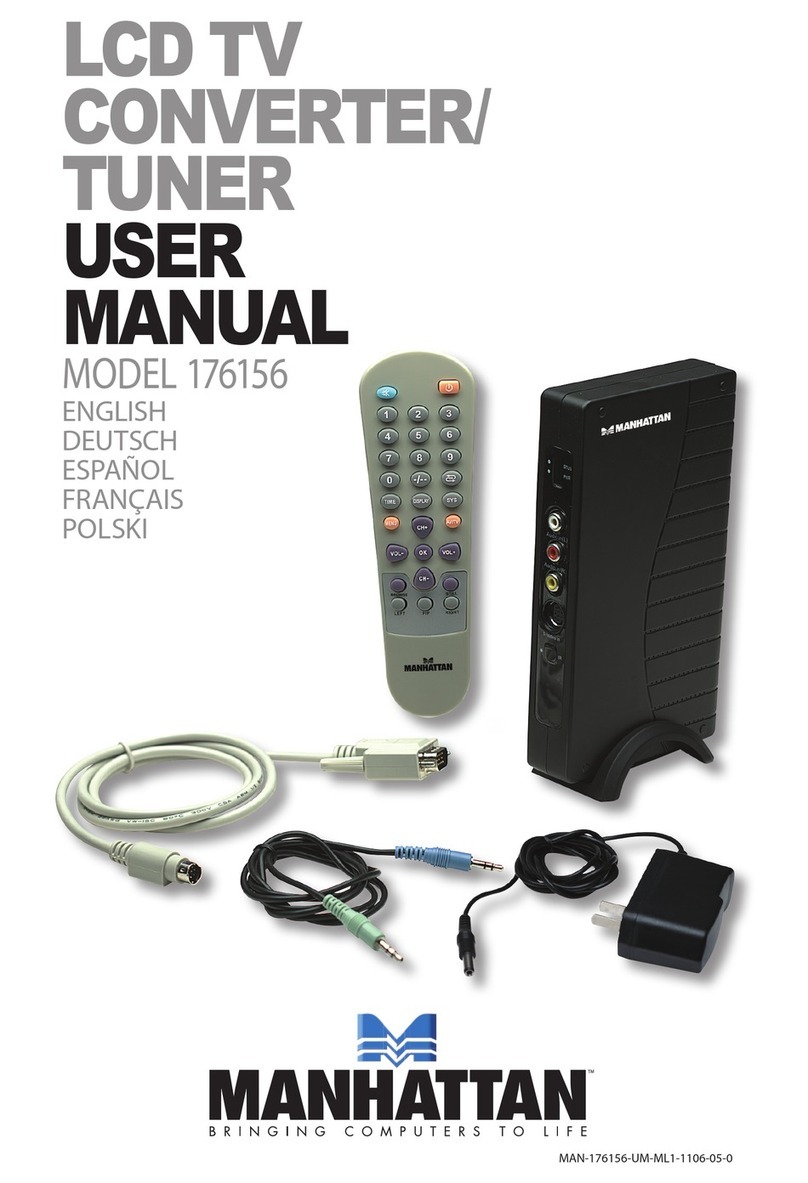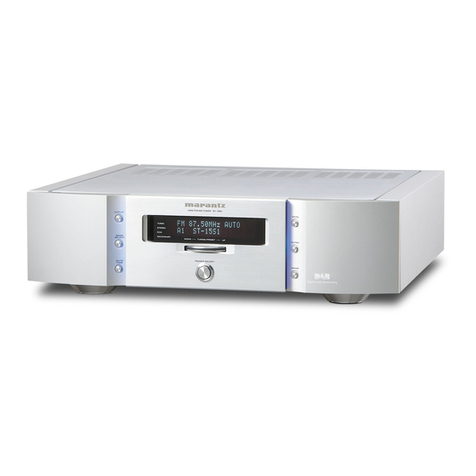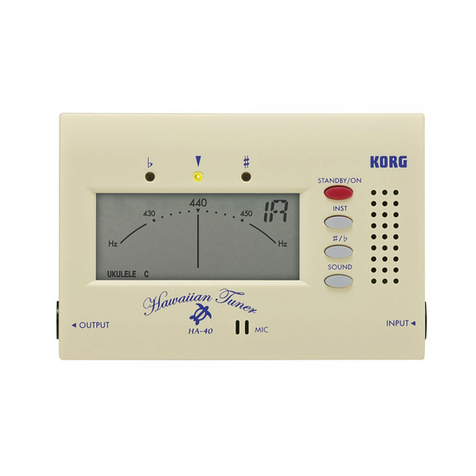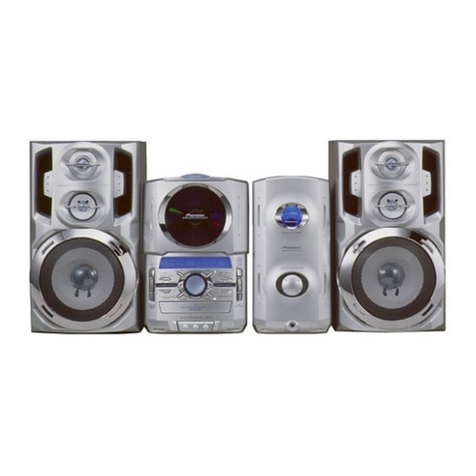
8
Theory of Operation
Some basic ideas about impedance
The theory underlying antennas and transmission lines is fairly complex, and in fact employs a
mathematical notation called “complex numbers” that have “real” and “imaginary” parts1. It is beyond the
scope of this manual to present a tutorial on this subject, but a little background will help you understand
what your AT-1000 is doing, and how it does it.
In simple DC circuits, the wire resists the current flow, converting some of it into heat. The relationship
between voltage, current and resistance is described by the elegant and well-known “Ohm’s Law”, named
for Sir George Simon Ohm of England, who first described it in 1826. In RF circuits, an analogous but far
more complicated relationship exists.
RF circuits also resist the flow of electricity. However, the presence of capacitive and inductive elements
cause the voltage in the circuit to lead or lag the current, respectively. In RF circuits this resistance to the
flow of electricity is called “impedance”, and can include all three elements: resistive, capacitive, and
inductive.
The output circuit of your amplifier consists of inductors and capacitors, usually in a series/parallel
configuration called a “pi network”. The transmission line can be thought of as a long string of capacitors
and inductors in series/parallel, and the antenna is a kind of resonant circuit. At any given RF frequency,
each of these can exhibit resistance, and impedance in the form of capacitive or inductive “reactance”.
Transmitters, transmission lines,antennas and impedance
The output circuit of your amplifier, the transmission line, and the antenna all have a characteristic
impedance. For reasons too complicated to go into here, the standard impedance is about 50 ohms resistive,
with zero capacitive and inductive components. When all three parts of the system have the same
impedance, the system is said to be “matched”, and maximum transfer of power from the amplifier to the
antenna occurs. While the output circuit and transmission line are of fixed, carefully designed impedance,
the antenna presents a 50 ohm, non-reactive load only at its natural resonant frequencies. At other
frequencies, it will exhibit capacitive or inductive reactance, causing it to have an impedance different from
50 ohms.
When the impedance of the antenna is different from that of the amplifier and transmission line, a
“mismatch” is said to exist. In this case, some of the RF energy from the amplifier is reflected from the
antenna back down the transmission line, and into the amplifier. If this reflected energy is strong enough it
can damage the amplifier’s output circuits.
The ratio of transmitted to reflected energy is called the “standing wave ratio”, or SWR. An SWR of 1
(sometimes written 1:1) indicates a perfect match. As more energy is reflected, the SWR rises to 2, 3 or
higher. As a general rule, modern solid state amplifiers must operate with an SWR of 3 or less. Tube
exciters are more tolerant of high SWR. If your 50 ohm antenna is resonant at your operating frequency, it
will show an SWR of 1. However, this is usually not the case; operators often need to transmit at
frequencies other than resonance, resulting in a reactive antenna and a higher SWR.
1For a very complete treatment of this subject, see any edition of the ARRL Radio Amateur’s Handbook
Reactance
Reactance
